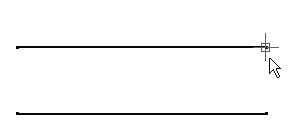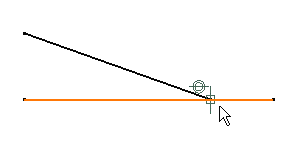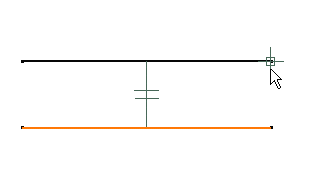- support lines and circles
- alignment
- parallelism
- perpendicularity
- tangency
- concentricity
- horizontality
- verticality
- middle point
You can choose whether or not you want to create the constraints detected by SmartPick. To create the constraints, you can either:
- select the Create detected and feature-based constraints check box in Tools > Options > Mechanical Design > Drafting > Geometry tab.
- or activate Create Detected Constraints
 in the Tools toolbar.
in the Tools toolbar.
-
Create a first line.
-
Create a second line.

SmartPick can be used to create certain elements on the drawing. More precisely, only the elements which the cursor last went over will be used to apply SmartPick constraints. In other words, you simply need to move the cursor over the element you want to use as reference for a constraint. No element is picked.

-
To detect parallelism constraints, go over the line to be used as reference.

As a result, a parallelism constraint is detected and created.

- When a constraint is detected by SmartPick, you can temporarily:
- deactivate this constraint by maintaining the Shift key pressed.
- lock this constraint by maintaining the Ctrl key pressed.
- In a Generative Drafting context, you cannot create geometrical constraints for extremities and circle centers.